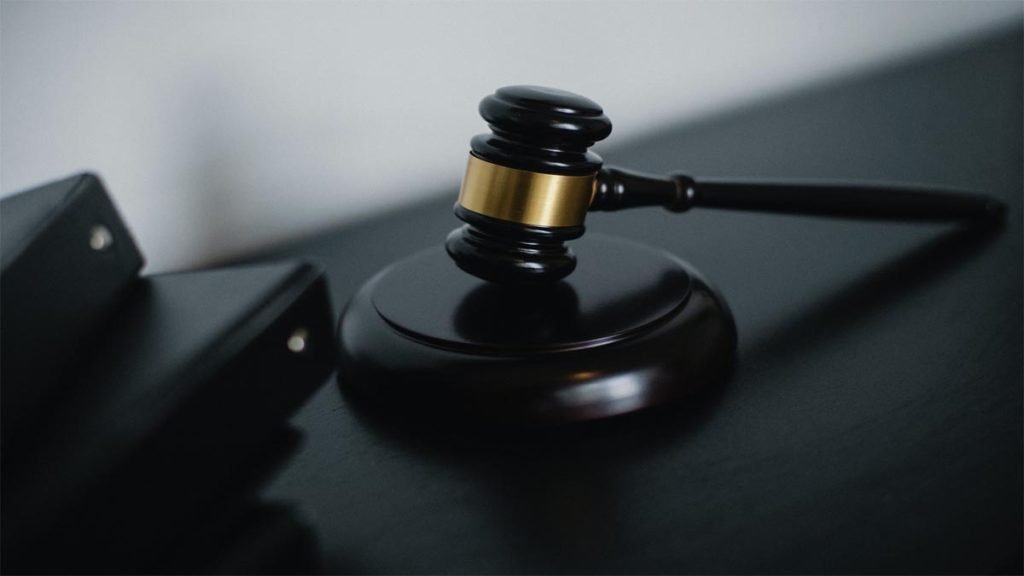In the wake of a hit-and-run accident, the pursuit of justice can be an overwhelming and confusing journey. From identifying the responsible party to seeking the compensation you deserve, navigating the legal system can be a daunting task. But fear not, this comprehensive guide is here to help you every step of the way.
Table of Contents
Whether you were a pedestrian, cyclist, or motorist involved in a hit-and-run accident, this article will provide you with the knowledge and tools necessary to seek justice. We will explore the legal obligations of drivers involved in hit-and-run incidents, the steps you should take immediately after the accident, and how you can pursue compensation for your injuries and damages.
Our team of experienced legal experts has compiled this guide to offer clear and practical advice, ensuring that you are well-equipped to face the challenges that lie ahead. No matter how complex your situation may be, remember that you have the right to seek justice and be compensated for your losses. So, let’s get started on this journey towards justice and the compensation you rightfully deserve.
Understanding Hit and Run Accidents
Hit-and-run accidents occur when a driver involved in a collision with another vehicle, pedestrian, or cyclist flees the scene without stopping to provide information or assist the injured party. These incidents can result in severe physical injuries, emotional trauma, and financial losses for the victims. Understanding the legal implications of hit-and-run accidents is crucial for pursuing justice and compensation.
In most jurisdictions, it is a legal requirement for drivers involved in accidents to stop, exchange information, and provide aid if necessary. Failing to do so can result in criminal charges, including hit-and-run offenses. Hit-and-run accidents are taken seriously by law enforcement due to the potential harm caused to victims and the disregard for legal obligations. However, identifying the responsible party in a hit-and-run accident can be challenging without the proper evidence.
To increase your chances of identifying the responsible party, it is essential to gather as much information as possible at the scene of the accident. This includes noting the make, model, and color of the vehicle, capturing photographs or videos of the scene, and obtaining contact information from any witnesses present. Additionally, contacting the authorities immediately after the accident can help initiate an investigation and increase the chances of apprehending the responsible party.
Steps to Take Immediately After a Hit-and-Run Accident
Being involved in a hit-and-run accident can be a disorienting and distressing experience. It’s important to remain calm and take immediate action to protect your rights and gather crucial information. Following these steps can help you build a strong case and increase your chances of obtaining the compensation you deserve.
The first step after a hit-and-run accident is to ensure your safety and the safety of others involved. If possible, move to a safe location away from traffic and call emergency services for any necessary medical assistance. While waiting for help to arrive, try to gather as much information about the incident as possible. Take note of the time and location of the accident, the direction the other vehicle was traveling, and any distinguishing features of the vehicle or driver.
If there are witnesses present, ask them for their contact information and request that they provide a statement regarding what they saw. Witnesses can play a crucial role in identifying the responsible party and providing valuable evidence for your case. Additionally, take photographs or videos of the accident scene, including any damage to your vehicle or personal belongings. These visual records can serve as valuable evidence during the claims process.
Gathering Evidence for a Hit-and-Run Accident Claim
Building a strong case for a hit-and-run accident claim requires gathering sufficient evidence to prove the negligence of the responsible party. Without proper evidence, it can be challenging to pursue compensation for your injuries and damages. Here are some essential pieces of evidence to gather after a hit-and-run accident:
- Witness Statements: Contact information and statements from witnesses can provide crucial information about the accident and help identify the responsible party. Reach out to witnesses as soon as possible after the incident to ensure accurate recollection of the events.
- Photographs and Videos: Capture visual evidence of the accident scene, including damage to your vehicle, any injuries sustained, and the surrounding area. These records can help establish the severity of the accident and support your compensation claim.
- Medical Records: Seek immediate medical attention after a hit-and-run accident, even if you believe your injuries are minor. Medical records documenting your injuries and treatment can serve as compelling evidence of the impact the accident has had on your physical well-being.
- Police Reports: Contact the authorities and file a police report as soon as possible after the accident. This report will outline the details of the incident and can be used as evidence during the claims process.
- Insurance Documentation: Gather all relevant insurance documents, including your policy details, coverage limits, and any communication with your insurance provider regarding the hit-and-run accident. This information will be essential when filing a compensation claim.
By collecting this evidence, you can strengthen your hit-and-run accident claim and increase your chances of obtaining the compensation you deserve. Remember to keep all documentation organized and readily accessible for future reference.
Reporting a Hit and Run Accident to the Authorities
After a hit-and-run accident, it is crucial to report the incident to the authorities as soon as possible. Promptly notifying law enforcement can help initiate an investigation and increase the chances of identifying the responsible party. When reporting a hit-and-run accident, follow these steps:
- Call Emergency Services: If there are any injuries or immediate threats to safety, call emergency services right away. They will dispatch medical help and ensure the necessary resources are allocated to the scene of the accident.
- Provide Detailed Information: When reporting the hit-and-run accident to the police, provide as much accurate information as possible. This includes the time and location of the incident, a description of the other vehicle involved, and any distinguishing features of the driver.
- Cooperate with the Investigation: If an investigation is initiated, cooperate fully with law enforcement. Provide any additional information or evidence that may aid in identifying the responsible party.
- Follow-up: Stay in contact with the investigating officer and inquire about the progress of the investigation. By remaining engaged in the process, you can demonstrate your commitment to seeking justice and increase the chances of a successful outcome.
By reporting the hit-and-run accident to the authorities, you contribute to the collective efforts to hold the responsible party accountable and seek justice for the harm caused.
Contacting Your Insurance Company After a Hit-and-Run Accident
After a hit-and-run accident, it is crucial to contact your insurance company promptly. Your insurance policy may provide coverage for hit-and-run incidents, including compensation for property damage, medical expenses, and lost wages. Here are the steps to follow when contacting your insurance company:
- Review Your Policy: Familiarize yourself with the terms and conditions of your insurance policy, specifically the coverage options for hit-and-run accidents. Understanding your policy will help you navigate the claims process effectively.
- Provide Accurate Information: When reporting the hit-and-run accident to your insurance company, provide accurate and detailed information about the incident. This includes the time, location, and circumstances of the accident, as well as any evidence you have gathered.
- Document Communication: Keep a record of all communication with your insurance company, including the names of the representatives you speak with and the details of your conversations. This documentation will serve as evidence of your cooperation and can help resolve any disputes that may arise during the claims process.
- File a Claim: Submit a formal claim for compensation to your insurance company. Include all relevant documentation, such as police reports, medical records, and photographs, to support your claim.
Remember that insurance companies are businesses, and their primary goal is to minimize their financial liability. Be prepared for potential challenges and seek legal advice if you encounter any difficulties during the claims process.
Seeking Medical Attention and Documenting Injuries
Seeking immediate medical attention after a hit-and-run accident is essential, even if you believe your injuries are minor. Some injuries may not be immediately apparent, and delaying treatment can worsen your condition and impact your ability to seek compensation. Here are the steps to take when seeking medical attention after a hit-and-run accident:
- Call for Medical Help: If you or anyone involved in the accident requires immediate medical attention, call for an ambulance or go to the nearest emergency room. Timely treatment can prevent further complications and ensure your well-being.
- Follow Medical Advice: Cooperate with medical professionals and follow their advice regarding treatment, medication, and rehabilitation. Adhering to their recommendations will support your recovery and strengthen your compensation case.
- Document Your Injuries: Keep a record of all medical treatments, prescriptions, and expenses related to your injuries. This documentation will serve as evidence of the impact the accident has had on your physical well-being and can help determine the amount of compensation you are entitled to.
- Obtain Medical Reports: Request copies of your medical records, including diagnoses, treatment plans, and prognosis. These reports will provide valuable evidence of the injuries sustained and their long-term effects.
By seeking medical attention promptly and documenting your injuries, you demonstrate the seriousness of the accident and increase your chances of obtaining fair compensation for your physical and emotional suffering.
Finding Witnesses and Gathering Testimonies
Witnesses can play a crucial role in identifying the responsible party in a hit-and-run accident and providing valuable evidence for your claim. If there were witnesses present at the scene of the accident, follow these steps to find them and gather their testimonies:
- Note Witness Details: Immediately after the accident, take note of any witnesses present, including their names, contact information, and any distinguishing features. This information will help you locate them later during the claims process.
- Contact Witnesses Promptly: Reach out to witnesses as soon as possible after the accident to ensure accurate recollection of the events. Be polite and explain the purpose of your call, emphasizing the importance of their testimony in seeking justice.
- Interview Witnesses: During your conversation with witnesses, ask them to provide a detailed account of what they saw. Encourage them to include specific details, such as the make and model of the vehicle involved, the actions of the driver, and any other relevant observations.
- Request Written Statements: Ask witnesses to provide written statements regarding the hit-and-run accident. Written statements carry more weight than verbal testimonies and can be used as compelling evidence during the claims process.
Remember to express your gratitude to witnesses for their cooperation and willingness to assist in your pursuit of justice. Their testimonies can significantly strengthen your case and increase the likelihood of a successful outcome.
Hiring a Personal Injury Attorney
Navigating the legal process of a hit-and-run accident claim can be complex and overwhelming. Hiring personal injury attorneys experienced in handling hit-and-run cases can significantly improve your chances of obtaining fair compensation. Here are the reasons why hiring a personal injury attorney is essential:
- Legal Expertise: Personal injury attorneys specialize in navigating the legal complexities surrounding hit-and-run accidents. They have the knowledge and experience to guide you through the claims process, ensuring that your rights are protected and maximizing your chances of success.
- Case Evaluation: A personal injury attorney will assess the details of your case, including the evidence gathered, and provide an objective evaluation of its strength. This evaluation will help you understand the potential value of your claim and the likelihood of a favorable outcome.
- Negotiation Skills: Insurance companies have teams of experienced adjusters and attorneys working to minimize their financial liability. A personal injury attorney will negotiate on your behalf, ensuring that you receive fair compensation for your injuries and damages.
- Litigation Representation: If a fair settlement cannot be reached through negotiation, a personal injury attorney will represent you in court. They will present your case effectively, advocating for your rights and seeking the maximum compensation available.
When hiring a personal injury attorney, ensure that they have experience in handling hit-and-run accident cases specifically. This expertise will ensure that they understand the unique challenges associated with these cases and can provide the best legal representation.

Pursuing Compensation for a Hit and Run Accident
Pursuing compensation for a hit-and-run accident requires a thorough understanding of the legal process and the ability to present a strong case. With the evidence gathered, the assistance of a personal injury attorney, and a determination to seek justice, you can pursue compensation for your injuries and damages. Here are the steps involved in pursuing compensation:
- File a Claim with Your Insurance Company: Submit a formal claim for compensation to your insurance company, including all relevant documentation and evidence. Work closely with your personal injury attorney to ensure that your claim is comprehensive and accurately reflects the impact of the hit-and-run accident.
- Negotiate a Settlement: Your personal injury attorney will negotiate with the insurance company on your behalf, aiming to secure a fair settlement. Be prepared for potential counteroffers and disputes during the negotiation process.
- Consider Alternative Dispute Resolution: If a fair settlement cannot be reached through negotiation, explore alternative dispute resolution methods, such as mediation or arbitration. These processes can provide a quicker and more cost-effective resolution than going to court.
- Litigate if Necessary: If all other avenues for resolution have been exhausted, your personal injury attorney will represent you in court. They will present your case effectively, utilizing the evidence gathered and advocating for a favorable judgment.
Remember that pursuing compensation for a hit-and-run accident can be a lengthy process. Patience, perseverance, and the support of a personal injury attorney will be essential in achieving a successful outcome.
Conclusion
Seeking justice and compensation after a hit-and-run accident can be a challenging journey. However, armed with the knowledge and tools provided in this guide, you are well-equipped to navigate the legal system and pursue the compensation you rightfully deserve. Remember to act promptly, gather sufficient evidence, and seek the assistance of a personal injury attorney to maximize your chances of success. You have the right to seek justice and be compensated for your losses.


